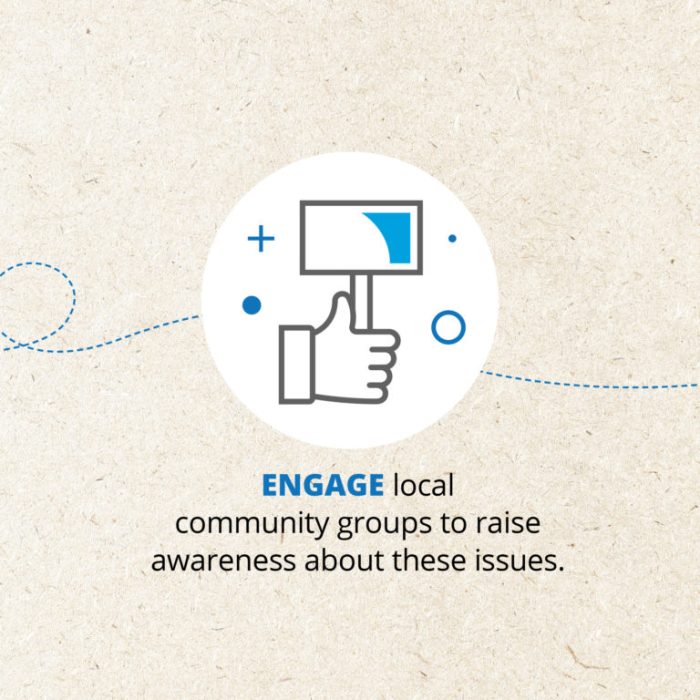
Smoking cessation programs are like a superhero squad for your lungs, ready to rescue you from the clutches of nicotine! Whether you’re battling with stubborn cravings or in need of a supportive sidekick, these programs offer a treasure trove of options including counseling, medication, and support groups that feel more like a friendly gathering than a health intervention. It’s a whimsical adventure where you can discover the art of behavioral therapy, navigate the online and in-person program landscapes, and learn how nutrition can help your body bounce back after kicking the habit.
With a sprinkle of humor and a solid strategy, you’ll find that quitting smoking can be less of a daunting task and more of an exciting quest. So grab your cape, and let’s embark on this journey to a smoke-free life!
Smoking Cessation Programs
Smoking cessation programs are essential lifelines for those attempting to kick the habit of smoking, and they’re available in a variety of formats to cater to different needs. Whether you’re more of a “let’s sit down and talk” type or a “just give me the pills and let me go” kind of person, there’s something for everyone. These programs not only help you break the chains of nicotine addiction but also wrap you in a cozy blanket of support and motivation.One of the primary types of smoking cessation programs includes counseling, which can be delivered in various ways such as individual sessions or group settings.
Coupled with this, medication options like nicotine replacement therapy (NRT) and prescription medications can help manage cravings, making the journey to quit a little less bumpy. Support groups offer the camaraderie of fellow quitters, ensuring no one feels alone in the battle against cigarettes. Together, these components create a multifaceted approach to smoking cessation, catering to diverse personal preferences and needs.
Role of Behavioral Therapy in Smoking Cessation
Behavioral therapy is a crucial element in smoking cessation programs, focusing on changing the habits and thought patterns associated with smoking. It’s like putting a GPS in your brain to reroute your desire to light up. This approach can include techniques such as cognitive-behavioral therapy (CBT), which helps individuals identify triggers and develop coping strategies to handle cravings.Key aspects of implementing behavioral therapy in smoking cessation programs include:
- Identifying Triggers: Recognizing the situations, emotions, or activities that spark the urge to smoke.
- Developing Coping Strategies: Finding alternative methods to deal with cravings, such as exercising or using stress-relief techniques.
- Setting Goals: Establishing clear, achievable objectives on the path to quitting smoking.
- Monitoring Progress: Keeping track of milestones and setbacks to understand patterns and improve strategies.
Behavioral therapy empowers individuals to reshape their relationship with smoking, making it easier to resist the temptation of that next puff.
Effectiveness of Online Versus In-Person Smoking Cessation Programs
In an age where you can order pizza with a single click, online smoking cessation programs have become increasingly popular. However, the effectiveness of these programs compared to traditional in-person sessions is worth dissecting, as they each have their own unique charms.Online programs provide convenience and accessibility, allowing participants to engage in the process from the comfort of their homes, often featuring interactive tools and resources.
In contrast, in-person programs offer the personal touch of face-to-face interaction, which can be incredibly motivating and supportive. Research indicates that:
- Success Rates: In-person programs generally report higher success rates due to the immediate support and accountability they provide.
- Accessibility: Online programs reach a broader audience, especially for those who may not have local resources available.
- Cost-Effectiveness: Many online programs are more budget-friendly, making them an attractive option for budget-conscious quitters.
Ultimately, the best choice between online and in-person programs depends on individual preferences and circumstances. Both pathways can lead to a smoke-free future, as long as the commitment to quitting remains strong and persistent.
Health and Nutrition
Quitting smoking can be a rollercoaster of emotions, cravings, and—let’s be honest—snack attacks. As your body begins to heal from the toxic fallout of cigarettes, your nutritional needs shift like a chameleon trying to impress its date. This is the time to embrace healthy eating habits that can ease your transition and keep the “quit” in your smoking cessation journey.
The impact of nutrition after quitting smoking is monumental, primarily because the body is in a detoxifying phase. Vitamins, minerals, and nutrients become the superheroes of your recovery, offering essential support as your body begins to flush out the remnants of nicotine. Nutrition plays a crucial role, not just in your health but in managing those pesky cravings and potential weight gain that often tags along with quitting.
Nutrition Strategies for Preventing Weight Gain
Maintaining a balanced diet while transitioning away from smoking is like walking a tightrope—tricky yet possible! Here are some well-rounded strategies to keep you steady and healthy during this transformative time:First, it’s essential to understand that the allure of snacks can be stronger than your desire to quit. However, by making smart food choices, you can satisfy your cravings without compromising your health.
Consider these points:
- Incorporate fruits and vegetables: They are low in calories yet high in nutrients. Think of them as your crunchy allies in the battle against cravings.
- Choose whole grains: Foods like brown rice and whole-wheat bread provide fiber, which keeps you feeling full and satisfied, much like a cat after a solid nap.
- Opt for lean proteins: Chicken, fish, and legumes can help stabilize your blood sugar levels, reducing the temptation to reach for high-calorie snacks.
- Plan your meals: Being proactive about meal prep can reduce last-minute unhealthy choices. Think of it as setting up a fortress around your cravings.
Hydration is another vital element that can’t be overlooked. After quitting smoking, your body enters a crucial detoxification phase and staying hydrated is like giving it a refreshing spa day.
Importance of Hydration in Detoxification
Water isn’t just H2O; it’s the magical elixir that flushes out toxins, rejuvenates cells, and keeps your skin looking as fresh as a morning dew. Adequate hydration can help mitigate withdrawal symptoms and manage cravings. Consider the following benefits of proper hydration post-cessation:
- Flushes out toxins: Drinking enough water helps your body remove the remnants of nicotine and other harmful substances.
- Reduces cravings: Sometimes, cravings can be confused with thirst. Staying hydrated helps alleviate that confusion, preventing unnecessary snacking.
- Boosts mood and energy: Dehydration can lead to fatigue and irritability. Keeping hydrated can help you stay upbeat and energized, ready to take on the day.
- Promotes overall health: Adequate hydration supports nearly every bodily function, making it essential for your health post-smoking.
So, as you navigate the smokeless seas, remember that nutrition and hydration are your trusty lifeboats. Embrace whole foods, stay hydrated, and let those cravings sail away into the sunset like a forgotten dream.
Self-Hypnosis for Smoking Cessation

Imagine a world where your cravings for cigarettes vanish like smoke in the wind. Well, buckle up, because self-hypnosis might just be the magic carpet ride you need to get there! This method takes you on an internal journey, helping you tap into the powers of your subconscious mind to kick the smoking habit for good. It’s like having a personal coach in your head, minus the whistle and the potential for embarrassment at the gym.Self-hypnosis is based on the principle that our subconscious mind is an incredibly powerful tool.
By shifting your focus and creating a deeply relaxed state, you can rewire your thoughts and beliefs about smoking. Think of it as changing the channel on your mental television from “Smoking is Comfort” to “Freedom and Fresh Air.” You can use visualization, guided imagery, and positive affirmations to reinforce your desire to quit, all while you chill out in your own mind’s theater.
Techniques and Principles of Self-Hypnosis
Before diving in, it’s essential to understand the foundational techniques of self-hypnosis that can help you quit smoking. These techniques are designed to help you enter a relaxed state and access your subconscious.
- Relaxation Techniques: Begin by finding a quiet place where you won’t be interrupted. Close your eyes, take deep breaths, and let your body relax. Imagine your muscles melting like ice cream on a sunny day.
- Visualization: Picture yourself as a non-smoker. See yourself enjoying activities without cigarettes, like a triumphant marathon runner or an enthusiastic karaoke star.
- Positive Affirmations: Create statements that resonate with you, such as “I am free from cigarettes” or “I choose health and vitality.” Repeat these until they become your new mantra, replacing the urge to smoke.
- Focus Techniques: Concentrate on a particular object or image—a favorite place or a symbol of health. This focus helps drown out the cravings, much like how a cat distracts itself from a cucumber.
Success Stories of Self-Hypnosis in Action
Real stories can be some of the most motivating tales, and self-hypnosis has helped many individuals triumph over their smoking habits. Take, for example, Mike, a 32-year-old who struggled for over a decade. After trying every method under the sun—patches, gum, and even cold turkey—he stumbled upon self-hypnosis. A few sessions in, he was able to visualize a life without cigarettes, celebrating milestones like running a 5K without gasping for air.
Then there’s Linda, who had been smoking since high school. With self-hypnosis, she created a vivid mental picture of a smoke-free version of herself, complete with fresh, minty breath and a radiant smile. She reports that the cravings simply faded away, and now she’s the proud owner of a new hobby: collecting air fresheners!
Creating a Self-Hypnosis Script for Smoking Cessation
Creating your own self-hypnosis script is a personalized way to strengthen your resolve against smoking. Here’s how you can craft one that resonates with your journey:
1. Introduction
Begin with a few lines about your commitment to quitting smoking. Something like, “I am ready to embrace a healthier, smoke-free life.”
2. Induction Phase
Lead yourself into relaxation. Use phrases such as, “With each breath, I feel more relaxed and at peace.”
3. Deepening
Use imagery to deepen the relaxation state. “As I count down from ten to one, I feel myself sinking deeper into comfort.”
4. Suggestion Phase
Here’s where the magic happens! Insert your affirmations and visualizations. “As I breathe in, I am inhaling confidence and strength; as I exhale, I release all cravings for cigarettes.”
5. Reorientation
Gradually bring yourself back to full awareness. “I will now count from one to five, and with each number, I will feel refreshed and empowered.”By crafting a script that’s uniquely yours, you can reinforce your commitment to quitting while enjoying the journey of self-discovery and empowerment.
Ultimate Conclusion

In conclusion, embracing smoking cessation programs is not just about saying goodbye to cigarettes; it’s about welcoming a vibrant new chapter in your life. With various tools at your disposal—from self-hypnosis scripts to healthy eating strategies—you’re well-equipped to tackle the challenges ahead. Remember, every puff-free day is a victory, and with the right support, you’ll find that the journey is as rewarding as the destination.
Here’s to fresh air and new beginnings!
Commonly Asked Questions
What are the benefits of joining a support group?
Support groups provide a safe space for sharing experiences, encouragement, and tips while fostering a sense of community among those on the same journey.
How long do cravings last after quitting?
Cravings typically peak within the first week but can linger for months; however, they gradually decrease in intensity over time.
Can I use smoking cessation programs if I occasionally smoke?
Absolutely! Smoking cessation programs can help you reduce or eliminate smoking habits, no matter your current smoking level.
Is it normal to gain weight after quitting?
Yes, many people experience weight gain after quitting due to increased appetite and metabolism changes, but healthy eating can help manage this.
How do I choose the right program for me?
Consider your preferences for in-person or online support, the types of resources offered, and what aligns best with your lifestyle and quitting goals.





